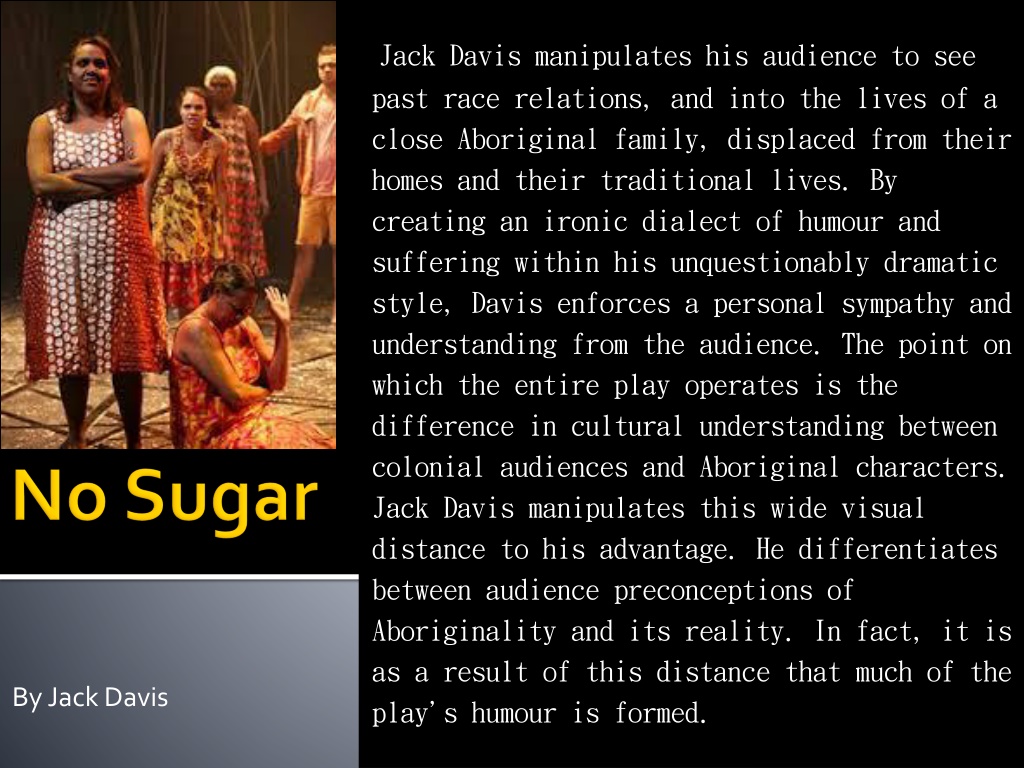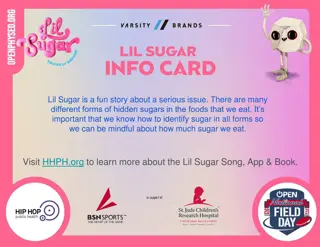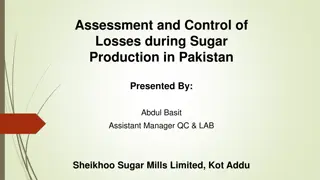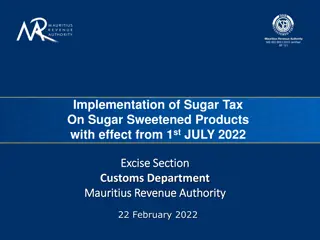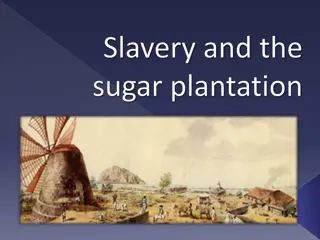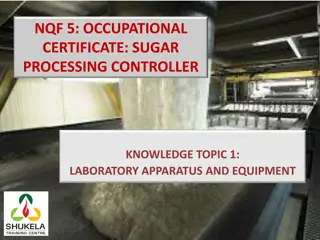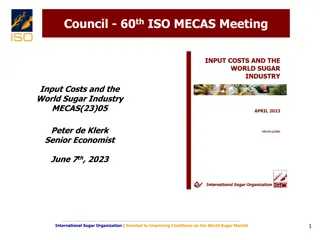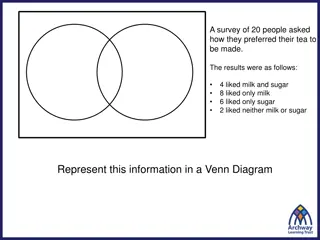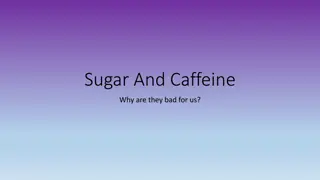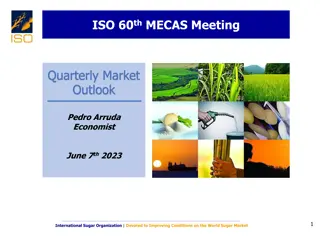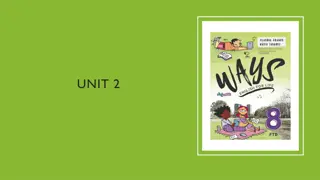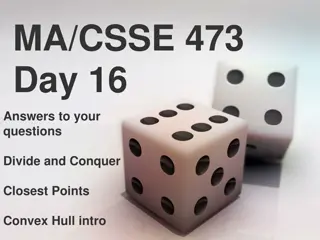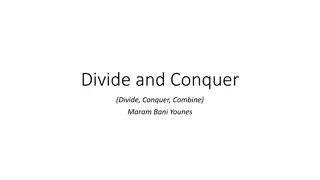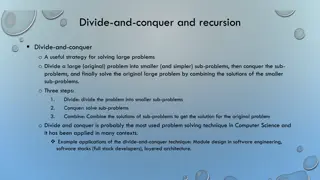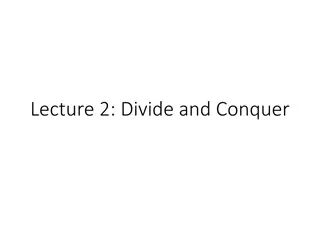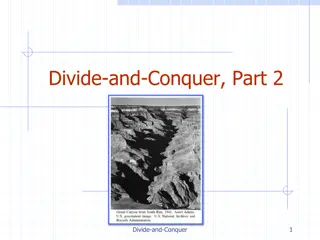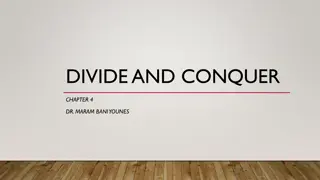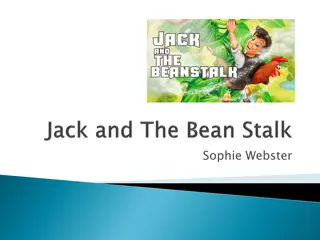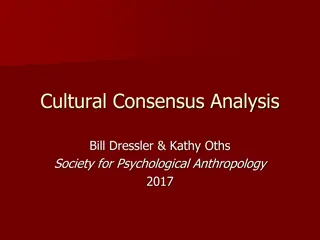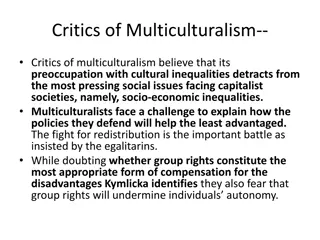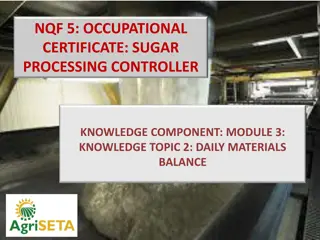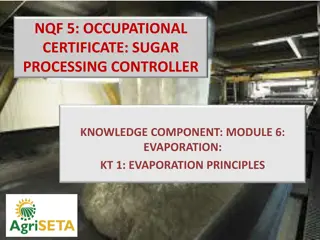Understanding Cultural Divide in "No Sugar" by Jack Davis
Jack Davis manipulates his audience's perception of race relations and delves into the lives of an Aboriginal family, displaced from their traditional homes. By using humor and suffering through an ironic lens, Davis evokes sympathy and understanding from the audience. The play focuses on the cultural gap between colonial audiences and Aboriginal characters, challenging preconceptions and highlighting the reality of Aboriginal experiences during a historical period marked by forced resettlement and cultural clashes.
Download Presentation

Please find below an Image/Link to download the presentation.
The content on the website is provided AS IS for your information and personal use only. It may not be sold, licensed, or shared on other websites without obtaining consent from the author. Download presentation by click this link. If you encounter any issues during the download, it is possible that the publisher has removed the file from their server.
E N D
Presentation Transcript
Jack Davis manipulates his audience to see past race relations, and into the lives of a close Aboriginal family, displaced from their homes and their traditional lives. By creating an ironic dialect of humour and suffering within his unquestionably dramatic style, Davis enforces a personal sympathy and understanding from the audience. The point on which the entire play operates is the difference in cultural understanding between colonial audiences and Aboriginal characters. Jack Davis manipulates this wide visual distance to his advantage. He differentiates between audience preconceptions of Aboriginality and its reality. In fact, it is as a result of this distance that much of the play's humour is formed. By Jack Davis
Born 11 March 1917 Moore River Settlement Descendant of the Nyoongarah people Worked as labourer, drover Wrote down what he saw First play 1972, The Steel and the Stone, history of the Moore River Settlement
Set during the Great Depression 1929-34 Moore River settlement a place to which families are forcibly resettled This comes after 40-80,000 years of history of inhabitation of Australia Country as religion Dreamtime / alcheringa land as life, so if you are forcibly removed from your land .?
Indigenous Australian ancient history Early contact history Invasion and wars Genocide Protectionism and Control Policy period Assimilation Policy and the height of the stolen generation period Path to Reconciliation Native Title, Land Rights, Apology http://www.australianstogether.org.au/stories /detail/assimilation
2. The richly varied modes of dialogue in No Sugar are central to viewer s experience and their understanding of the characters in the play. Discuss.
Remember there are distinct types of language used in the play:
The aborigines often speak in their own dialect to show their own unique relationship to culture, land and lifestyle. Many aboriginal terms are used to authenticate the aborigines experiences (such as inji sticks , the gugha , the jeering meear ); these expressions capture their unique relationship to land and reflect their diverse cultural systems ( mummari and boolyaduk ) and lifestyle customs. Their use also reinforces Davis s point that many aboriginal words simply do not have a corresponding word in the white man s language, because of cultural and lifestyle differences. They cannot be translated. Furthermore, audiences are invited to identify with the alienating affect of a foreign language which the aborigines have to deal with on a daily basis. This alienation is also exacerbated by their lack of access to education.
Overly formal language. Use of idiom Serves to emphasise themes of power and oppression Neville s formal speech language of the bureaucracy of the motherland. Power and authority. Detachment and disconnection = unable to empathise.
The use of everyday spoken language by the indigenous characters and the sympathetic white characters serves to increase the realism of their lives and situation, and in doing this, their situation becomes more real to the reader/audience. It increases the affinity the audience has with the characters.
This put down language serves to highlight how racist some of the chite characters are and how lacking in sympathy they are. It shows them to be racist and unpleasant. It alienates the audience from the character.
